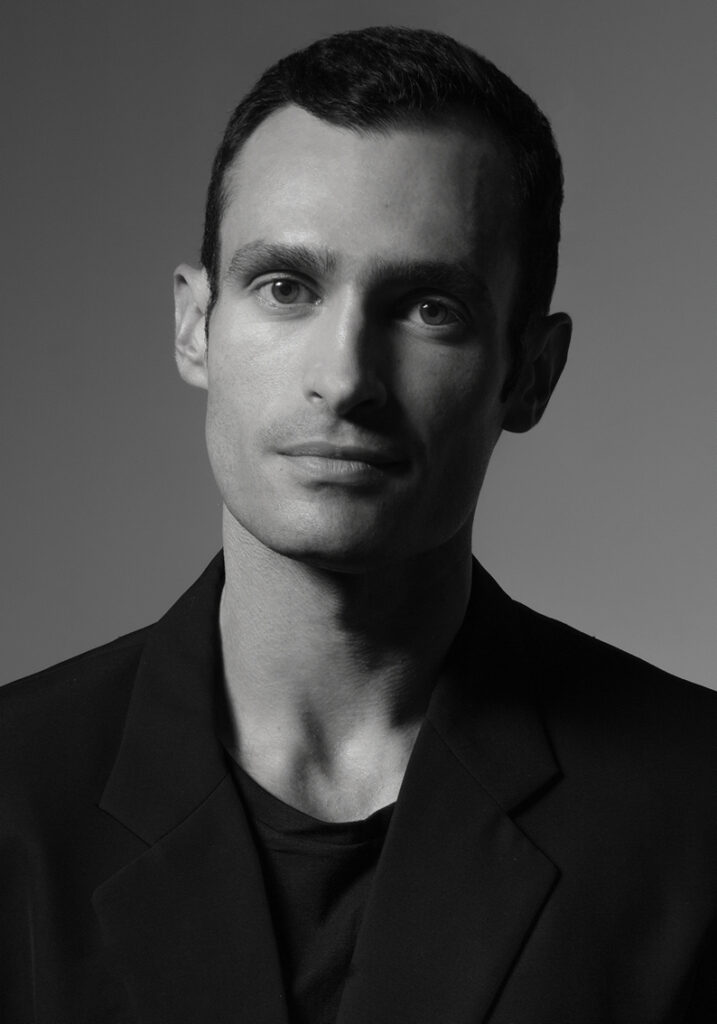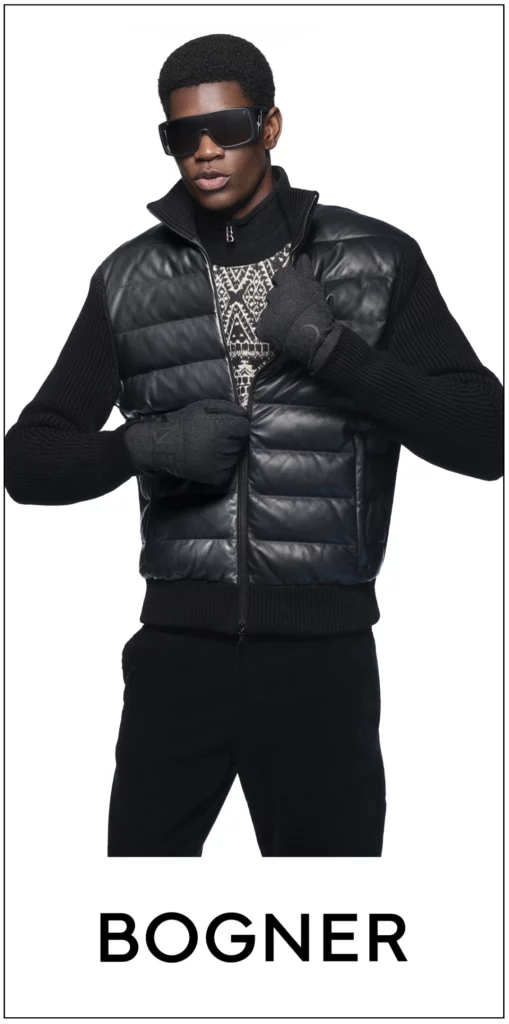Interview and photos by Milan Vukmirovic,
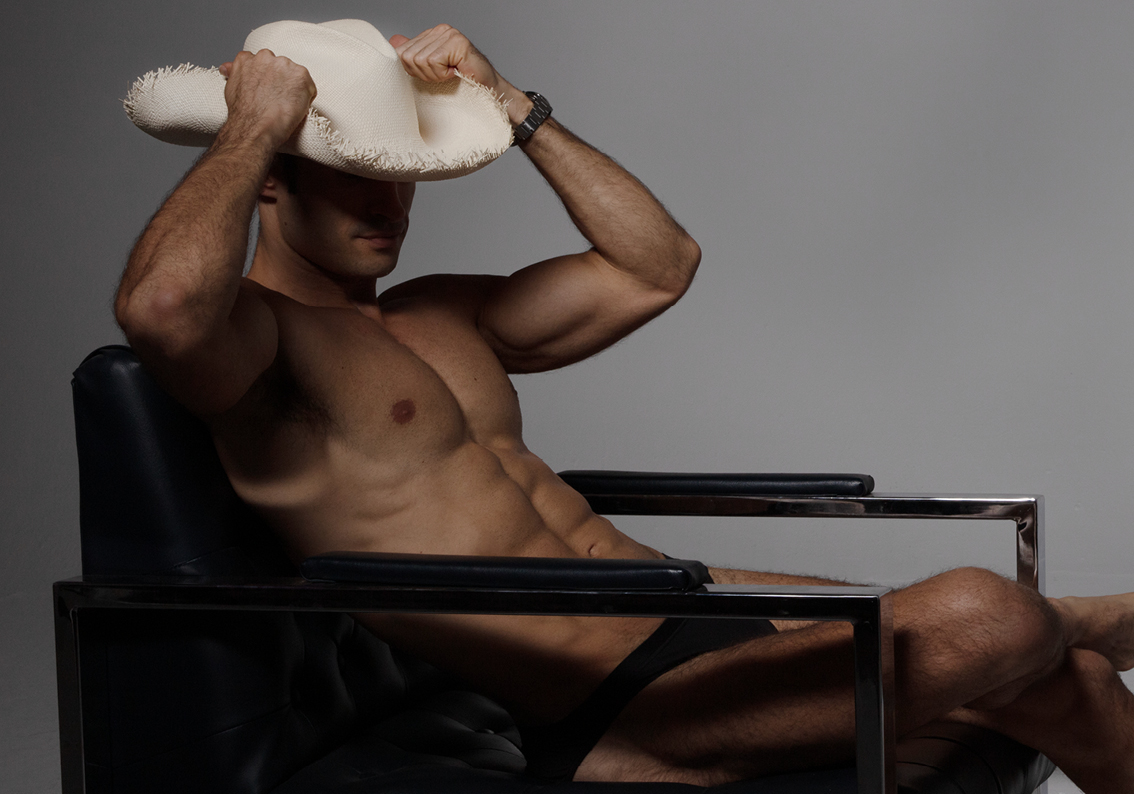
The buff, Bogotá-born designer Sergio Delgado (@sergiodelgador) credits New York with giving him the drive to change his body and his life — and in his hands, hats are becoming sexy again, too. Here, the sought-after milliner speaks with FFM editor-in-chief Milan Vukmirovic about a lifelong passion, born of a family heritage, that’s inspiring fashion lovers to reconsider a long-neglected accessory.
MV: How did you get into hat making? Is it a craft that runs in the family?
SD: In my family, we’ve all collected hats forever, but it wasn’t a business or anything. My great-grandfather was one of the first people in Colombia to wear proper hats made in Europe. Then he found a guy in Colombia who could reproduce the models he brought back from Europe. That same man taught me all the basic millinery skills I needed to make hats myself.
MV: But collecting hats is one thing, and creating them and making a business of it is quite another. What made you take that step?
SD: It started six years ago. I was in my last year at Parsons in New York and I was looking for a hat — something cool, of great quality, that spoke to my aesthetic. And that I could afford. I couldn’t find any, so I started making them.
MV: Did you always want to be a creative, a designer?
SD: My whole life. I always wanted to make hats. It was always at the back of my mind. I like my hats a certain way, so I always had them made for me in Colombia. So that’s how it started. Then, honestly, I started to think “the world should have my hats!”
MV: At certain points in history, all men wore hats. Today, not so much. A few seasons ago, bucket hats were big. Baseball caps have been popular for decades. But no one is wearing real hats. Maybe cowboy hats now and then, it’s a style thing. Putting a hat on is like saying “’I want to be seen.”
SD: Totally, and I love that. I want to be seen wearing my hats. It’s just such a part of who I am, and that’s what my brand is, too. My goal is to pass that passion along to others. Often, people will stop me in the street in New York, and even in Colombia. They recognize me from Instagram. But more than catching attention, I believe that hats create confidence. I know they give me confidence in myself.
MV: But South America has more of a hat culture because of the climate.
SD: Right. In South America and thanks to the Spanish influence, hats are super important. Like the Cordovan; there’s a model that’s called the Cordobes that comes from Córdoba, in Andalusia.
MV: So you decided to launch your own hat brand?
SD: Once I started doing them for myself, people quickly noticed them and asked to buy them. Some friends suggested that I go and present my hats to some stores and showrooms. That’s kind of how it picked up. I didn’t start taking orders right away, but it gave me enough confidence to start doing my own collection.
MV: Now thanks to social media you can sell directly, too.
SD: Totally. We’ve been physically present in some small stores, but [business has] been mainly online, through our website.
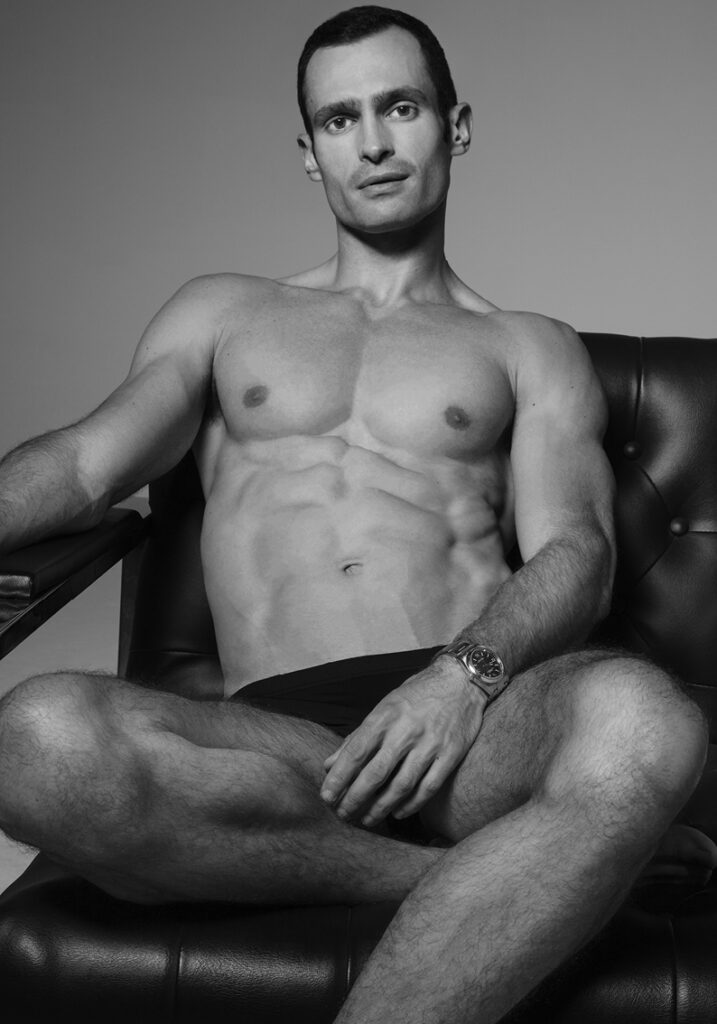
MV: It seems like social media has been a great opportunity for discovering designers from Latin and South America.
SD: Yes and it’s great because there’s so much happening in South America right now. Since I’m Colombian I can speak to that better, but there’s such a movement among a new generation of creatives, especially in fashion. In Mexico and Brazil, too
.
MV: Despite the political and economic context?
SD: Yes, because a damaged economy and rare employment opportunities mean it’s cheaper to make things in Colombia. So many designers, like me, who live between America and their homeland would rather give production to their people as an opportunity to create income for families back home.
MV: You’ve always lived in Colombia?
SD: Yes, for most of my life. I lived in Berlin for a year and loved it. It was fun, but it wasn’t what I wanted for my life. I knew I needed to live in a city that pushed me. New York changed everything for me.
MV: You said you were splitting your time between the US and Colombia. Is America your future?
SD: Yes. I love Colombia, I really do — I love my country and my people, it’s an amazing place, but I don’t want to stay there. I’ve just never fully fit in there, and I don’t think I ever will. I’m different, and I think it’s just a matter of how I see the world and society. It doesn’t necessarily align with what Colombians believe and preach, and that clashes with my everyday life. If you believe a certain way, if you think certain things, you want to live your life a certain way.
MV: Are you talking about macho culture, for example?
SD: Yes, it’s not just a cliché. Latin America is very macho. Homophobia is huge. As a gay designer, it’s not super bad, but the culture of toxic masculinity is very present even in big cities. Sometimes there’s hope and then sometimes it’s like going backwards. That kind of kills energy and the hope that things are changing. Then suddenly everything gets stopped by a new government or politicians, and you never know when things are going to change again. So that lack of stability isn’t great. For anyone, and especially not a young business. I believe in my country in the sense that I will definitely always keep my production in Colombia. But as I said it’s way past just the economic [context]. For me, it’s also about the impact we create within communities there and generating employment opportunities and bettering the standard of living for the people of Colombia.
MV: As a Frenchman living in Miami, I meet lots of people from different Latino countries. I’ve learned a lot about the cultural differences. What’s funny is that each Latino country has a very strong opinion — and often clichés — about the others. How do you see it with Colombians?
SD: We’re a warm, genuinely nice people. So I think that every Colombian you meet is always going to be very nice, very polite, very warm. Of course, the main cliché in the US is that if you’re Colombian you must be using a lot illegal substances, and of course that’s not necessarily true. Maybe in some cases. No judgment! But it’s also a stereotypical assumption. It doesn’t mean that I party all the time.
.MV: (Laughs) I was actually more referring to taste, fashion wise. Many Europeans think that designers from Latino countries only love strong colors, for example. Sometimes things can feel a little bit over the top, or too sexy. How do you feel about that? Because that’s a cliché, too. There are great designers in Sao Paulo or Mexico City, for example, who are doing super modern clothes without going crazy on color.
SD: There’s a kernel of truth to every cliché. Honestly it may be a little bit more complicated for those designers who go in the opposite direction, that are more avant garde. Taste in South America is very peculiar. Yes, it’s colorful. It’s boleros. It’s very floral, very sexy to show shapes. It’s rarely minimalist. It’s a bit more opulent, you know? So I think that that cliché of Latin American fashion is very true in the sense that it’s what sells at the end of the day. For countries that have been through rough times, money is at the center of everything. With so many people suffering, those who have money either hide it or flaunt it. That changes a lot depending on the city or the region. In Bogota, where I’m from, flaunting money is looked down upon. So people dress very quiet luxury, very toned down. It’s very conservative. But then if you go to the coast, for example, it’s the complete opposite. You have to show off, you have to wear brands and wear it big. You have to be opulent. It’s these two crazy opposites that somehow exist and coexist.
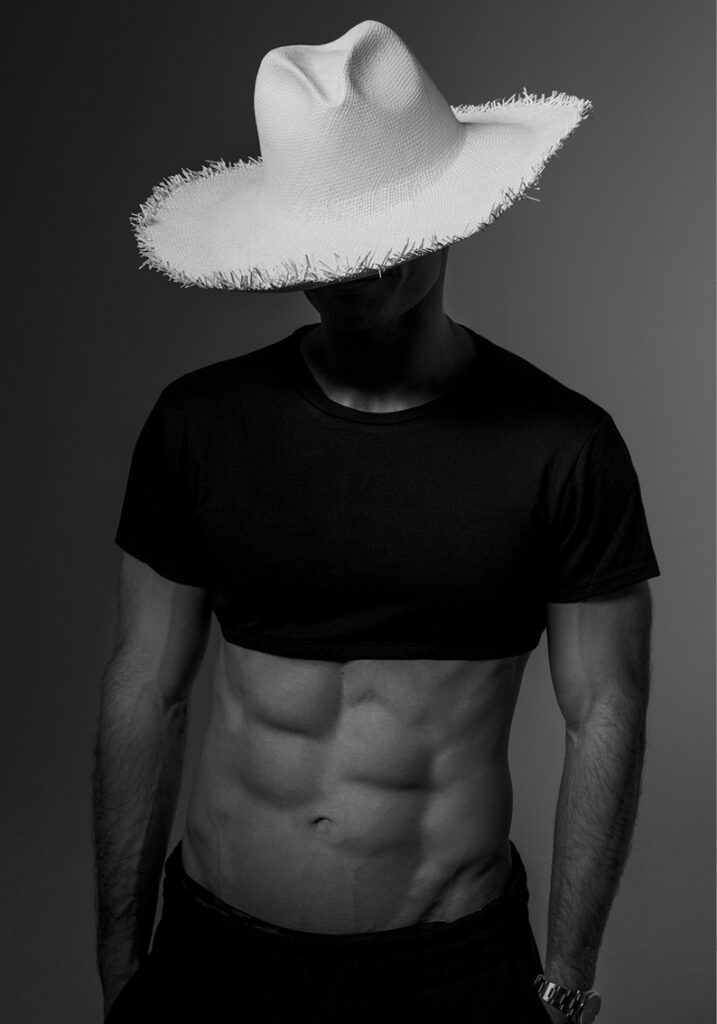
MV: Colombia, like Brazil, is becoming famous for cosmetic surgery. The women there are very body-conscious and always in search of perfection, nose jobs, boobs and ass, according to Latino standards of beauty. Its in the culture to retouch your body. Are the men in on that trend too?
SD: They weren’t but things are changing quickly. I think that men are more into the way they look now. It’s definitely not on the level of what women are doing. Women are still the ones that need to be pretty and sexy; men, not so much. But the new generation of men are definitely more body-conscious and attracted to fashion. With my hats I’ve been surprised to see some male clients willing to take risks I didn’t think they would. Some designs I feel are going to be for women, and then it turns out that most of the customers are men. I’ve been surprised, to be honest. I’ve also been shocked to see that, there’s a light at the end of the tunnel!
MV: To be honest, I started to follow you on Instagram a few years ago because I thought your body looked great. That gave me motivation to keep working out hard, and then I discovered that you were a hat maker. I guess because you get the power of social media, so you play with your image and show off a lot. But earlier you told me that you were very skinny younger. What made you decide to transform your body?
SD: I think I had just moved to New York, and I realized all those sporty guys everywhere were training and taking care of their body and I wanted to be like them. Wanting to be better for myself— it was just a competition with myself. It’s something New York gave me, in every sense. New York is a city that pushes you to be good. You have to be good to survive in New York. You have to be on top of your game, and you have to be always willing to learn, to grow and to change. So I think this is one of the ways that New York taught me to push myself a little bit harder. And it really has been a roller coaster: I haven’t looked like this since day one. It’s been up and down. Thin, fat, thin, fat. New York gave me the drive and the discipline and the vision to be like, do it. Be better.
MV: Well it worked out great for you! Discipline and dedication is everything. Your hats are amazingly beautiful, too. Thanks for your time.
SD: Thank you for including me.
